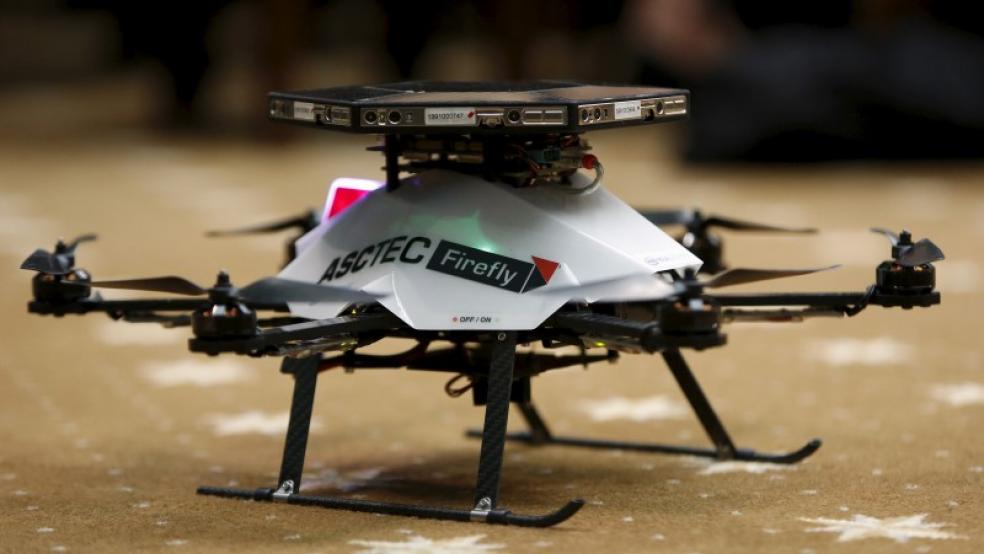ISIS is arming drones you can buy on Amazon with explosives and using them against the Kurdish and Iraqi forces it is battling in Iraq.
Related: More Killer Drones, Please: The Air Force Places a $371 Million Order
The New York Times reported yesterday that Pershmerga soldiers fighting the Islamic State in northern Iraq shot down a drone last week that exploded and killed two of them as they were examining it. And the Times says ISIS has tried using exploding drones on two other occasions in the past month. Two French Special Ops troops working with the Peshmerga were injured, according to CBS News.
The Islamic radicals have been using drones for surveillance for some time, but these attacks seem to mark a new escalation of drone warfare. By attaching explosives to small, commercially available drones such as the DJI Phantom, The Times said, ISIS can create remotely directed bombs.
CBS says that it’s not just ISIS, that other militant groups in the Middle East such as Hezbollah and Hamas are also adapting to drone-based warfare.
In February, 2015, The Verge reported that Homeland Security was testing a “nightmare scenarios where toy drones become flying bombs.” The story was based on a report by Wired that covered an exercise by DHS that played videos of toy drones firing semi-automatic weapons against armored vehicles. The drones won. But it was the drones carrying explosives that made everyone take notice, according to Wired.
Related: Game of Drones: The Air Force Ramps Up Video Game Warfare
Wired wrote a follow up last January when they covered the Open Briefing report about the ISIS arsenal.
“A lone wolf. A terrorist group. Drug cartels. Espionage-minded corporations. Activist organizations. The list of those who could benefit—or already have—from the illicit use of drones is long, and not getting any shorter.
“There appears to be no shortage of opportunity, either. You might remember the rogue DJI Phantom quadcopter that crash-landed on the White House lawn a year ago, or an unidentified drone that collided with the Sydney Opera House last fall, or any number of college and professional football stadium fly-bys over the last two years,” Wired reported.
The pace of remotely piloted warfare is quickening, with the Air Force moving from its Predator UAVs to the larger Reaper, ordering more drones, expanding the pool of personnel who can be trained to operate them and building up its fleet of small drones.
There is also talk of swarms of mini-drones being launched and controlled by fighters such as the F-35 and F-22.





